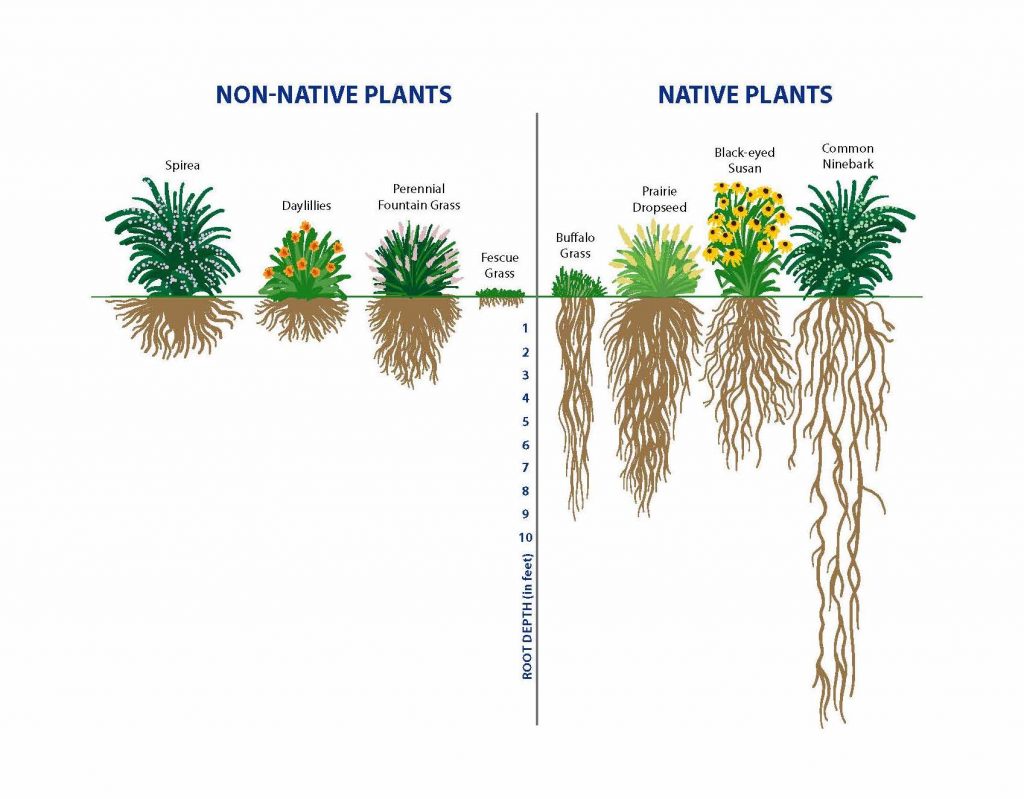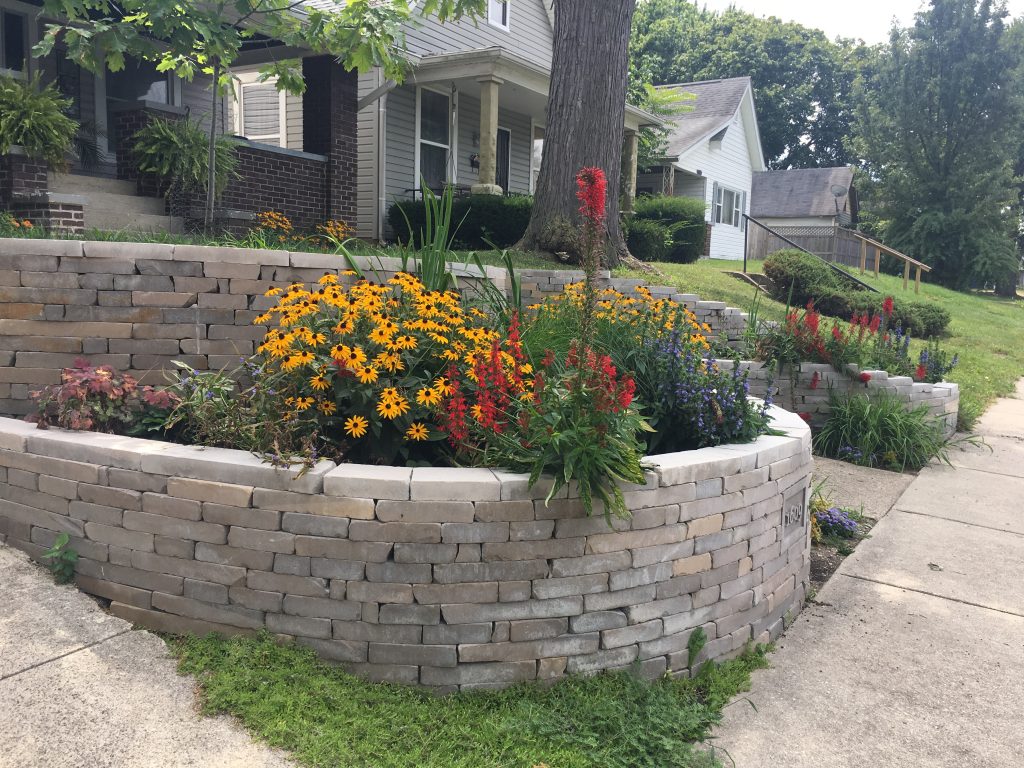Native Plants & Water
What Do Native Plants Have to Do with Our Water?

Native plants consist of flowering plants, vines, grasses, and sedges that adapt to the climate of a given area (there are also many native trees and shrubs). Over many millennia, these plants became experts at surviving, among other things, the periods of dry weather—even drought—that have long been a feature of our local weather. One adaptation that made this possible is the long and robust root systems common to these plants.
Big root systems benefit our water in three primary ways.
First, native plants don’t need to be watered like many exotic or ornamental plants. While some might flag a bit during the driest conditions, they usually won’t perish. Because they don’t need to be watered, we use less of our water supply on our landscaping, saving money and reducing stress on water supplies.
Second, native plant roots facilitate the infiltration of stormwater. In other words, when it rains, native plants help the water soak into the ground. Used wisely, this strategy can reduce ponding and flooding, and it prevents pollution from running to our waterways.
And this points us to the third benefit of native plant roots: they are tremendous filters. When it rains, the water collects and washes over the landscape, collecting the fertilizers, bacteria in dog poo, pesticides, oils, sediment, and other pollutants that come from our yards. It is estimated that 70% of the sediment in the United States is caused by human use of the land. Well-placed native plants—along a sidewalk, as a rain garden, along a shoreline—can slow that runoff and soak it into the ground where their roots filter out the pollutants. From there, the water continues on its way through the water cycle, either into an aquifer or toward a stream or river.
There is one more important function that native plants serve: they are an integral part of an ecosystem that includes the food web on which we are all dependent. They provide everything from nesting material to nectar for a wide range of wildlife. That includes pollinators: the bees, butterflies, birds, and other critters that together help produce about a third of the crops humans eat every day. They also aid in the reproduction of nearly all wild flowering plants. Learn more about pollinators here.
